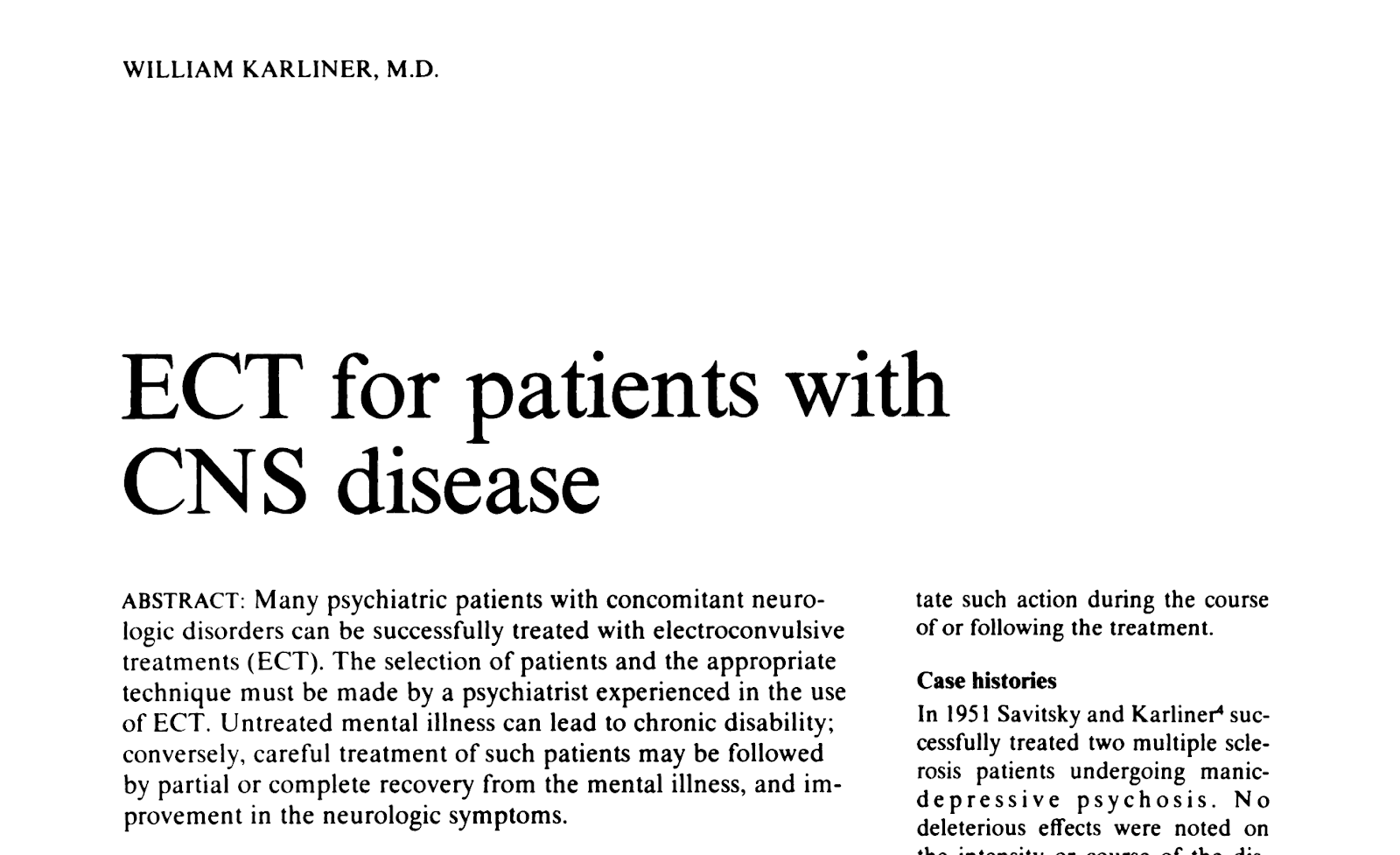ECT in Geriatric Psychiatry: New Review From Emory Docs

Out on PubMed, from authors in Atlanta, is this review: The Use of ECT in the Elderly-Looking Beyond Depression. Chatham AN, Shafi H, Hermida AP. Curr Psychiatry Rep. 2022 Jul 13. doi: 10.1007/s11920-022-01353-0. Online ahead of print. PMID: 35829850 Review. The abstract is copied below: Purpose of review: We reviewed recent evidence on the use of electroconvulsive therapy (ECT) in the geriatric population. This review looked at the literature on depression, for which there is a breadth of data, as well as other conditions that have historically not been as well studied, as well as attempting to provide practical recommendations for ECT practitioners. This review also examined the impact of the COVID-19 pandemic on ECT in the elderly. Recent findings: ECT shows robust efficacy across many psychiatric diseases, from depression and bipolar disorder to psychosis and catatonia. It has also shown positive results at improving behavioral symptoms of deme...















